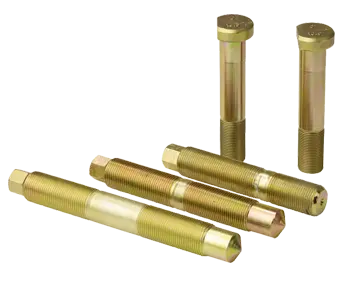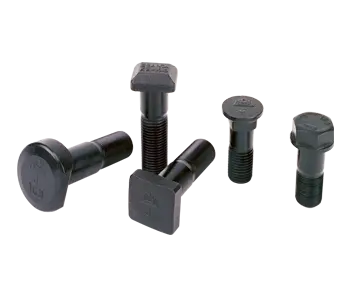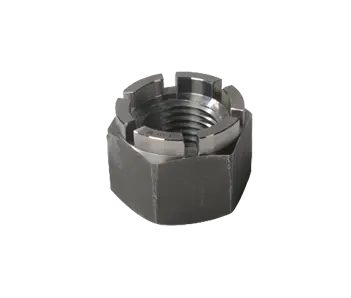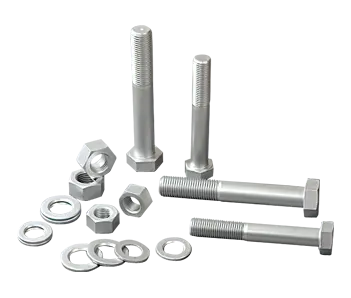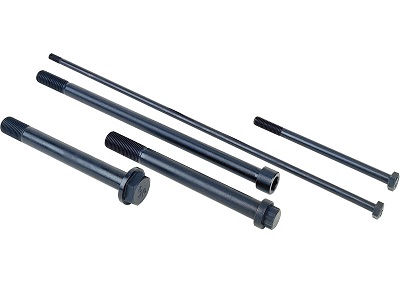
The quenching of steel is the heat treatment process of heating the steel to the critical temperature Ac3 (hypoeutectoid steel) or Ac1 (hypereutectoid steel) above the temperature, holding it for a period of time, making it fully or partially austenitic, and then cooling to below Ms (or isothermal near Ms) with a faster than critical cooling rate for martensite (or bainite) transformation.
Process
Heating, insulation, cooling.
The essence of quenching
The supercooled austenite is transformed into martensite or bainite to obtain martensite or bainite structure.
Purpose of quenching
(1) Greatly improve the rigidity, hardness, wear resistance, fatigue strength and toughness of steel, so as to meet the different requirements of various mechanical parts and tools;
(2) Through quenching to meet the ferromagnetic, corrosion resistance and other special physical and chemical properties of some special steels.
Application
The quenching process is the most widely used, such as tools, measuring tools, molds, bearings, springs and automobiles, tractors, diesel engines, cutting machine tools, pneumatic tools, drilling machinery, agricultural machinery, petroleum machinery, chemical machinery, textile machinery, aircraft and other parts are using the quenching process.
The medium used for quenching cooling of the workpiece is called the quenching cooling medium (or quenching medium). The ideal quenching medium should have the condition that the workpiece can be quenched into martensite without causing too much quenching stress.
Commonly used quenching media are water, aqueous solution, mineral oil, molten salt, molten alkali and so on.
Water
Water is a quenching medium with strong cooling capacity.
Advantages: wide source, low price, stable composition is not easy to deteriorate.
Disadvantages: The cooling capacity is unstable, which is easy to deform or crack the workpiece. In the "nose" area of the C curve (about 500 ~ 600℃), the water is in the vapor film stage, and the cooling is not fast enough, and the "soft point" will be formed. In the martensitic transition temperature zone (100 ~ 300℃), the water is in the boiling stage, and the cooling is too fast, which is easy to make the martensitic transition speed too fast and produce great internal stress, resulting in deformation and even cracking of the workpiece. When the water temperature rises, the water contains more gas or the water is mixed with insoluble impurities (such as oil, soap, mud, etc.), which will significantly reduce its cooling capacity.
Application: It is suitable for quenching and cooling of carbon steel workpiece with small section size and simple shape.
Salt water and alkali water
Add an appropriate amount of salt and alkali in the water, so that the high-temperature workpiece immersed in the cooling medium, in the steam film stage precipitation of salt and alkali crystals and immediately burst, the steam film is destroyed, the surface of the workpiece is also blown up, which can improve the cooling capacity of the medium in the high temperature region, its disadvantage is that the medium is corrosive.
Application: Under normal circumstances, the concentration of salt water is 10%, and the concentration of caustic soda aqueous solution is 10% to 15%. It can be used as a quenching medium for carbon steel and low alloy structural steel workpiece, the use temperature should not exceed 60℃, and should be cleaned in time after quenching and anti-rust treatment.
Oil
The cooling medium generally uses mineral oil (mineral oil), such as oil, transformer oil and diesel oil. Oil generally uses No. 10, No. 20, No. 30 oil, the larger the number of oil, the greater the viscosity, the higher the flash point, the lower the cooling capacity, the use of temperature increases accordingly.
One-liquid quenching
It is a quenching operation method in which the austenitic chemical parts are immersed in a quenching medium and cooled to room temperature. The single liquid quenching medium includes water, salt water, alkali water, oil and specially prepared quenching agent.
Advantages: Simple operation, conducive to mechanization and automation.
Disadvantages: The cooling speed is limited by the cooling characteristics of the medium and affects the quenching quality.
Application: For carbon steel, single-liquid quenching is only suitable for workpiece with simple shape.
Double quenching
The austenitic chemical parts are first immersed in a medium with strong cooling capacity, and the steel parts are removed between the temperature of the quenching medium and immediately immersed in another medium with weak cooling capacity, such as water after oil, water after air and so on. Double liquid quenching reduces deformation and cracking tendency, the operation is not easy to master, and there are certain limitations in application.
Fractional martensitic quenching
It is the austenitic chemical parts first immersed in the temperature slightly higher or slightly lower than the steel martensitic point of the liquid medium (salt bath or alkali bath), maintain the appropriate time, until the steel parts of the inner and outer layers are reached the medium temperature after the air cooling, in order to obtain martensitic structure quenching process, also known as fractional quenching.
Advantages: Fractional quenching because the fractional temperature stays to the same temperature inside and outside the workpiece after air cooling, so it can effectively reduce the phase change stress and thermal stress, reduce the quenching deformation and cracking tendency.
Application: Suitable for alloy steel and high-alloy steel workpieces with high deformation requirements, and can also be used for carbon steel workpieces with small cross-section size and complex shape.
Isothermal quenching of bainite
It is the steel austenitizing, so that the fast cooling to the bainite transition temperature range (260 ~ 400℃) isothermal maintenance, so that austenite into bainite quenching process, sometimes called isothermal quenching, the general holding time is 30 ~ 60min.
Combined quenching
The workpiece is cooled to below Ms to obtain 10%-20% martensite, and then isothermal in the lower bainite temperature zone. This cooling method enables the workpiece with a large cross-section to obtain M+B structure. The martensite formed during pre-quenching can promote the bainite transformation and temper the martensite at isothermal. Composite quenching is used for alloy tool steel workpieces to avoid the first type of tempering brittleness and reduce the residual austenite volume, that is, deformation and cracking tendency.
